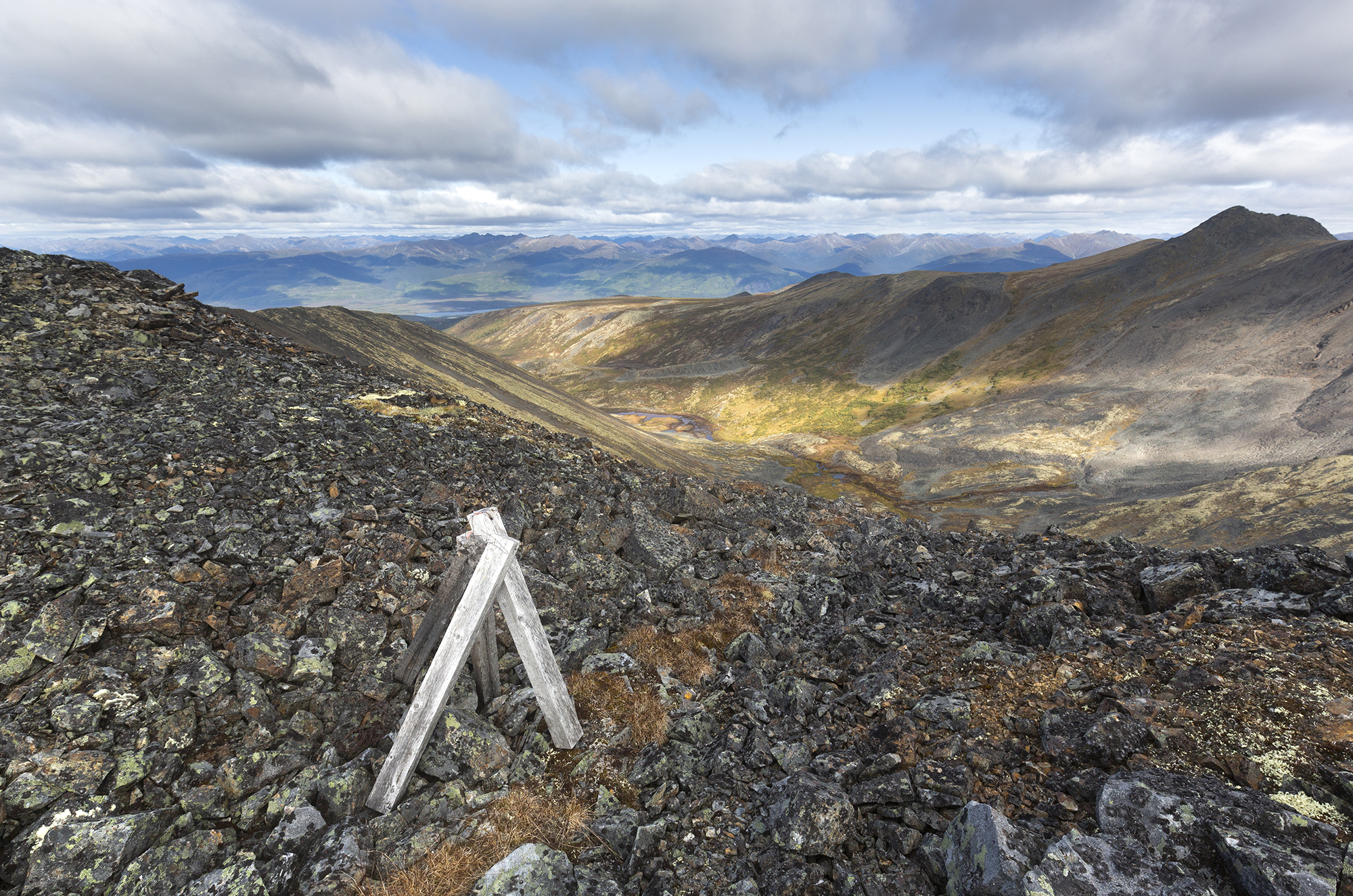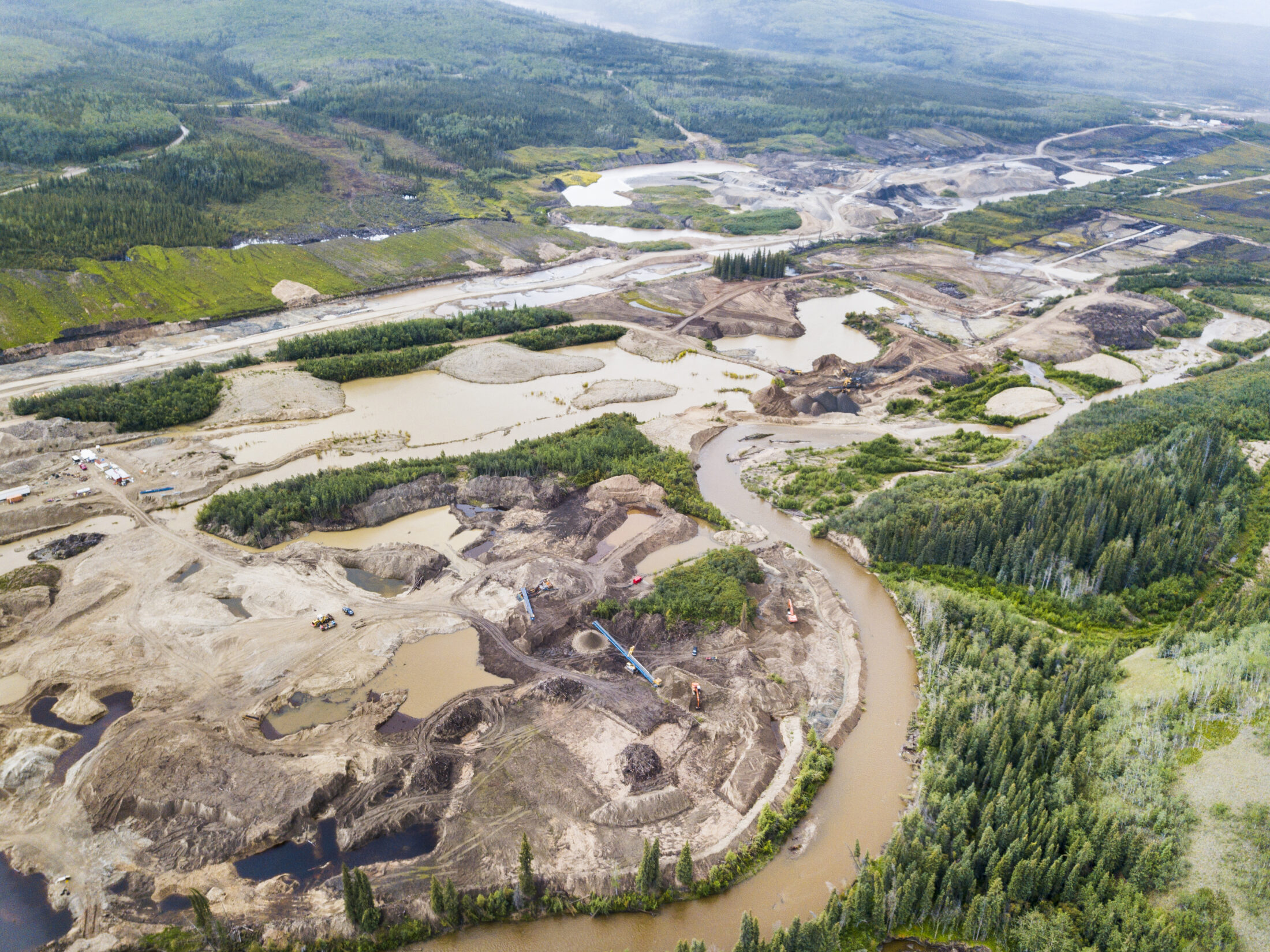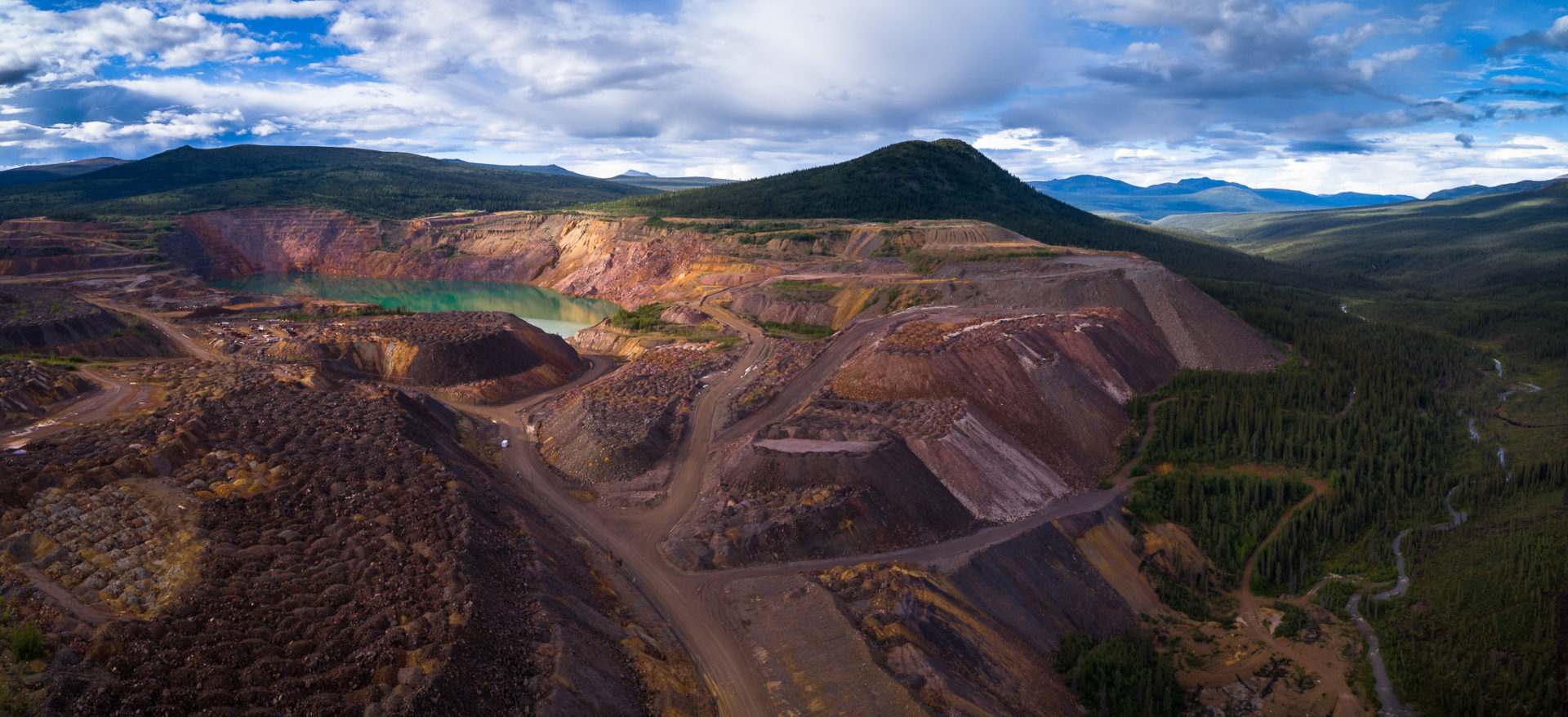
Rocky Mountain coal mine in Alberta takes next step to expansion
In Alberta, a massive open-pit coal mine near Jasper National Park is hoping to expand...
Yukon’s mining legislation is outdated and requires a major facelift to better protect the interests of all Yukoners, according to an expert panel tasked with making recommendations for a new Yukon Mineral Development Strategy.
The panel, first appointed in April 2019 to review the territory’s mining regime, released a strategy document late December, which outlines 79 recommendations for the Yukon government, including expediting land use planning and taxing companies for water use.
“This is a holistic document that takes into account such broad perspectives that is looking at potential solutions to challenges that have been on several tables for decades,” panel member Math’ieya Alatini told The Narwhal.
“It’s the short-term pain for the long-term gain of building a sector that is economically viable, that is trusted globally and is, economically, going to benefit all Yukoners now and in the future.”
The draft strategy is the culmination of feedback collected from Yukoners, many of whom expressed frustration
at inadequate legislation that does not protect the environment or communities, and tokenistic consultation with affected First Nations.
Read more: ‘Mining at any cost’: Yukoners say territory needs major mineral development overhaul
The panel noted it is confident its new report “fulfills the desire of many engagement participants for a bold, transformative and contemporary approach to Yukon mineral development” and said, moving forward with a mineral strategy, the Yukon government must “embrace the principles of reconciliation and work to build the trust and respect of Yukon First Nation governments, and the entities and agencies borne of the modern treaties.”
Yukoners can comment on the recommendations until Feb. 22. A final strategy will be submitted to the Yukon government and First Nations roughly one month later.
The Yukon government is reviewing all recommendations included in the draft strategy, Jesse Devost, spokesperson with Energy, Mines and Resources, told The Narwhal in an email.
“The release of the draft strategy is a significant step toward the establishment of a Mineral Development Strategy for Yukon that articulates the goals and objectives of Yukoners,” he said.
So what does the new report actually recommend? Here are some topline points.
The Quartz Act and Placer Mining Acts are the two key pieces of legislation that dictate how the mining industry operates in Yukon. Despite numerous amendments over the years, both acts date back to the Klondike Gold Rush era in the 1890s and remain steeped in antiquity.
The panel found that over the last 122 years “a patchwork quilt of amendments have rendered the Yukon’s mineral resource legislation unresponsive to evolving industry circumstances and difficult to enforce.”
The Yukon’s controversial free entry system allows prospectors to stake a claim anywhere they want, so long as it isn’t in a park or on certain municipal or settlement lands. This system has created conflict with First Nations that argue it undermines self-governance of Indigenous territory. The Carcross/Tagish First Nation has called on the Yukon government to abolish the system.

Weathered wooden posts mark a mineral claim near Rambler Creek. Yukon’s free entry mining system is a relic of the Klondike Gold Rush, and in much of the Yukon people can still claim mineral rights by pounding a post into the ground. Photo: Malkolm Boothroyd
The panel recommends “clear, consistent and specific constraints” on the free entry system to, in part, uphold the values of reconciliation. Without written consent of First Nations, there must be constraints on staking of lands where First Nations own surface rights, called Category B lands, the strategy states.
Several of the panel’s recommendations seek to ensure that Indigenous rights are upheld in the new legislation to ensure the acts aligns with modern treaties, the Canadian constitution and the United Nations Declaration on the Rights of Indigenous Peoples (UNDRIP), as well as acknowledge the principle of Free, Prior and Informed Consent.
To keep track of the mineral sector’s progress toward supporting principles contained in UNDRIP, the panel recommends a semi-annual “report card” be developed.
The panel also recommends that Yukon First Nations mining lands officers are granted full enforcement authority under new legislation and that reconciliation be added to the “list of reasons the Yukon Government may use to justify a prohibition of entry order for prospecting, staking and mining.”
Roberta Joseph, Chief of Tr’ondëk Hwëch’in First Nation, and Dana Tizya-Tramm, Chief of Vuntut Gwitchin First Nation, were not available to provide comment on the recommendations.
Carl Schulze, secretary treasurer with Yukon Prospectors Association, told The Narwhal it’s unclear what “reconciliation” means, which could cause confusion among the investment community.
“You can’t work a policy around really vague terms, at least you can’t when you incorporate it into regulations, permitting laws, anything like that — you have to deal with really hard and fast, nuts and bolts stuff,” he said.
To combat uncertainty surrounding land tenure, the panel recommends completing the five remaining regional land use plans concurrently in the next five years, including the
active Dawson land use plan (other land use plans include Kluane, Whitehorse, Teslin, and Northern Tutchone.)
Regional land use plans, which stem from 11 Yukon First Nations’
Final Agreements that cement First Nations self-governance, determine what can and cannot occur in a particular region, essentially balancing conservation values, First Nations’ rights and industrial pursuits.
The panel also recommends redirecting some of the not-yet-allocated $360 million in federal and territorial funding for the Yukon Resource Gateway Project, a program that seeks to improve the territory’s road network into areas where there is high resource potential, to speed up the land use planning process.
Schulze said he doubts all six regional land use plans can be completed within five years, noting that it took the land use plan for the Peel Watershed more than a decade to be completed. The Peel watershed saga resulted in a contested version of the regional plan being brought to the Supreme Court of Canada in 2017. The court ruled in favour of First Nations and environmental groups and an amended version was eventually adopted in 2019.
“These things go on a long time,” Schulze said, especially if there is opposition to proposed plans from certain groups. “I would say if they can do the remaining six [land use plans], including Dawson, in 10 years, I would tip my hat to them,” he added.
According to feedback submitted to the planning commission by the Yukon Prospectors Association’s former president in 2006, the association did not want the final land use plan for the Peel to “stop prospectors and mining exploration companies from prospecting, claim staking and doing low-level exploration” in the watershed.
Schulze also cautioned against rerouting money from the Yukon Resource Gateway Project to fast-track land use planning, saying the move would deprive valuable infrastructure from getting built.
The Yukon Prospectors Association calls itself “the voice for mineral exploration in the Yukon.”
“The one thing about land use planning is it invariably alienates some lands from mining, so, from our standpoint, we don’t benefit from it — not directly, because we lose some of the access to the land and there would be restricted access to other parts,” Schulze said on behalf of the association. “Now the money that was intended to help our industry could go against it.”
The strategy states that land use planning provides much-needed certainty for investors, which is why they should be completed on an expedited timeline.
“Investors hate uncertainty,” the strategy states. Completed land use plans will provide clarity to industry regarding whether there are “unmitigatable concerns about any given exploration area or mining project” and give both industry and government a better idea of where roads must be built to support mineral development.
The Yukon government recently cancelled a resource road that would have connected several mining exploration projects after finding its construction would violate relations with First Nations. The company behind the proposed resource access road, ATAC Resources, said it is seeking legal counsel on the territory’s decision to cancel the project.
In a bid to avoid this kind of investor uncertainty, the panel recommends implementing staking moratoriums in areas deemed to contain “high-value environmental, social and cultural attributes” once a given land use planning process is launched.
“A proactive approach to identifying staking prohibition zones at the beginning of regional planning processes will reduce a major source of uncertainty for the industry and a significant concern for First Nations, non-governmental organizations and Yukoners in general,” the strategy states.
There is no practice of pausing mineral staking in Yukon while land use planning processes take place, to the frustration of many Yukoners. The former vice-chair of the Dawson Regional Planning Commission called on the territorial government to implement such a moratorium while the much-anticipated Dawson land use plan process takes place but to no avail.

The impacts of placer mining are seen alongside the Indian River, near Quartz Creek, Yukon. The Indian River is heavily impacted by decades of placer mining which has not paused for development of the Dawson land use planning process. Photo: Malkolm Boothroyd / CPAWS Yukon
The panel recommends the new mining legislation and regulations be completed by the end of 2023.
Ed Peart, president of the Yukon Chamber of Mines, doubts this will happen, telling The Narwhal completing this important work within this short time frame is a “lofty” goal.
“I have a hard time believing that’s achievable with the timelines they’ve outlined,” he said, adding that the Forest Resources Act overhaul took about six years to complete. “We’re talking about two acts that have tremendous impacts on every Yukoner.”
Lewis Rifkind, mining analyst for the Yukon Conservation Society, told The Narwhal that creating entirely new legislation in such a short period of time, while commendable, would be “too ambitious.”
“When we’re designing these new legislation and regulations, we should be thinking very long term,” he said. “This could last for the next century. If we think long term, we could actually get this right. I think everyone could benefit, whether it’s the environment, the various levels of government, the various groups of Yukoners and even the mining industry.”
The Yukon government collects only a small amount of royalties from mining.
During the last 10 years, for instance, placer and quartz royalty revenues collected by the Yukon government averaged less than $100,000 per year, the strategy states. During the same timeframe, the value of mineral production averaged roughly $335.4 million on an annual basis.
The panel is calling on the Yukon government to launch a review of mining policies to ensure there are fair and efficient royalty rates, tax exemptions and permit and licensing costs.
Implementing a tax on water is a potential avenue that could help increase royalty rates while possibly encouraging sustainable mining, the strategy states.
The panel recommended an adjustable tax rate that could reward operators for keeping water quality high at mining operations: “the higher the water quality, the lower the effective rate of tax.”
“The industrial water tax would for the first time place an economic value on Yukon’s water resources and provide a new resource revenue source to be shared with Yukon First Nations,” the strategy states.
Inspiration for an industrial water tax came from British Columbia, the strategy states. In that province, all licensed surface water and groundwater users are required to pay annual water rentals, Tyler Hooper, a spokesperson with the Ministry of Forests, Lands, Natural Resource Operations and Rural Development, told The Narwhal in an email. For example, a mine that uses 1.2 million cubic metres of water per year would be charged $2,500 annually, according to a provincial government strategy.
Rifkind said more detail is needed to understand how the water tax would work in Yukon.
“How will it be applied? Will it be different for quartz exploration to a quartz mine to placer mining?” he said.
Rifkind is also wary of the tax turning into yet another cost of doing business rather than a strategy to keep water clean. However, he added the fact that it has been included in the strategy is a welcome change.
“From a resource extraction point of view, there is essentially no charge for the amount of water that you use,” Rifkind said.
The panel pointed out that if the territory wants to receive higher royalties from development, existing mines need to be managed in a way that keeps them profitable and the mining sector needs to be supported in opening new, profitable and sustainable mines.
The key to attracting investment is “a transparent and predictable environmental assessment and regulatory system,” the panel notes.
The report outlines strategies for an improved regulatory system, including eliminating duplication in the environmental assessment process, increased transparency around mining inspections, the establishment of standards for mining inspectors and ongoing engagement with First Nations and communities affected by mines.
The panel also recommends the promotion and regulation of mining be separated to avoid any conflict of interest within the department of Yukon Energy, Mines and Resources.

The Faro Mine remediation in Yukon is one of the other looming projects for the federal government. Cleanup is expected to begin in 2022 at a cost of more than $500 million. Photo: Matt Jacques / The Narwhal
During the public engagement process that informed the panel’s report, many Yukoners raised concerns about the legacy of mining in the territory.
“Environmental damage and ongoing threats to ecosystems as well as costs to the public purse to clean up abandoned mines were mentioned many times,” the report notes.
Many members of the public pointed to the owners of the abandoned Wolverine mine, who walked away from the project despite an ongoing need to maintain the property and prevent pollution of the surrounding landscape. The case underscores what many consider to be shortcomings of the territory’s bonding system, which risks foisting mining cleanup costs on taxpayers instead of companies.
Yukon’s Faro mine is also considered one of the country’s most contaminated sites and is expected to cost more than $500 million in taxpayer dollars to remediate.
Read more: After the mining rush: a visit to Faro mine, one of Canada’s costliest, most contaminated sites
It appears the panel heard these concerns, calling on the Yukon government to implement progressive reclamation policies and recommending the government require “legally enforceable” mine closure plans that are bolstered by adequate security and bonding plans.
Modernized legislation should include a suite of powers that the Yukon government could enforce, including seizing security and bonding before there are mounting costs and requiring annual corporate profiles to determine a company’s financial stability, including its insurance coverage, the strategy states.
Yukoners are able to fill out a public comment survey on the draft strategy until Feb. 22.
Get the inside scoop on The Narwhal’s environment and climate reporting by signing up for our free newsletter. A $335 million funding commitment to fund...
Continue reading
In Alberta, a massive open-pit coal mine near Jasper National Park is hoping to expand...

A trade war could help remake B.C.’s food system, but will family farmers be left...

First Nations are leading efforts to make sure lake sturgeon can find a home in...
